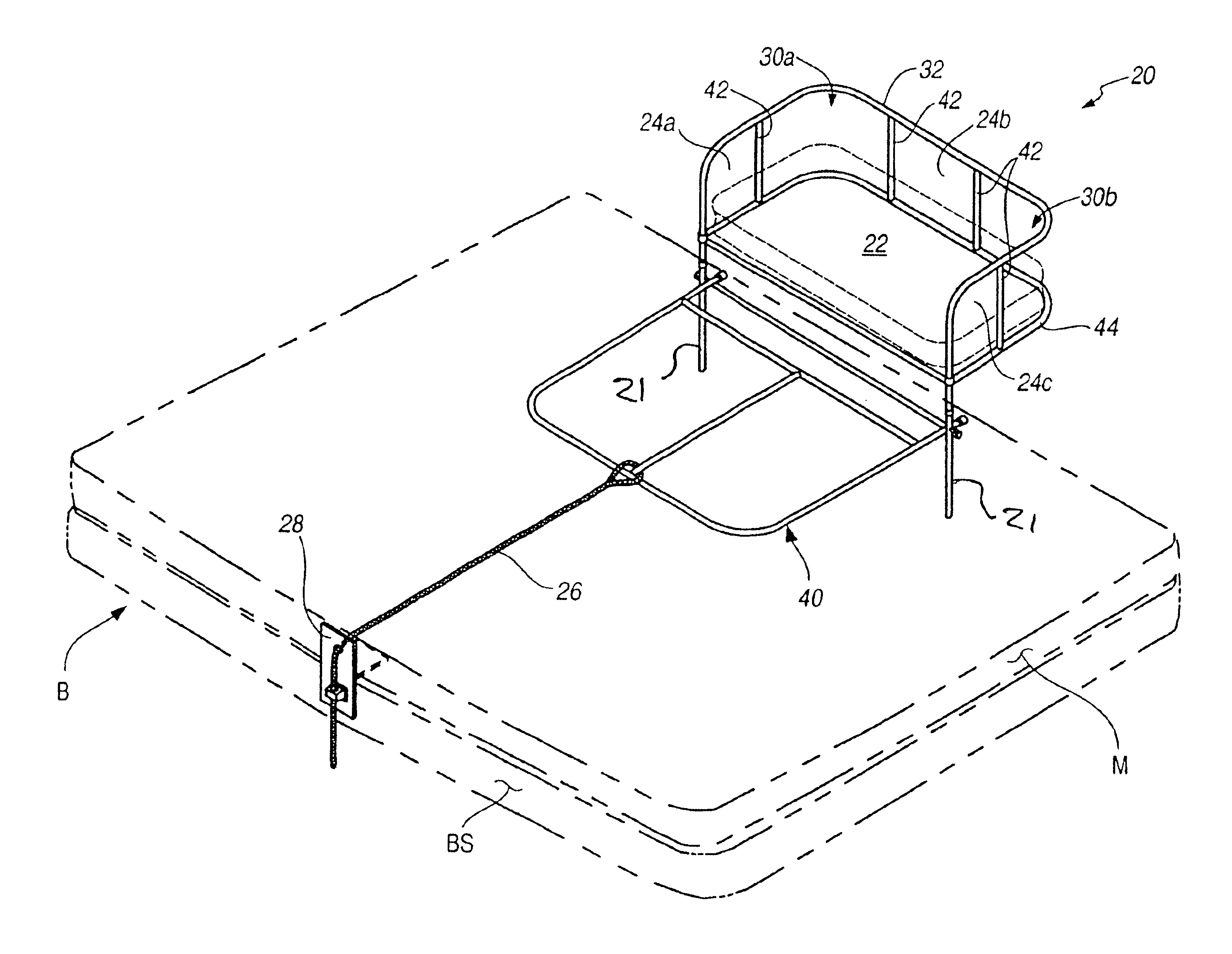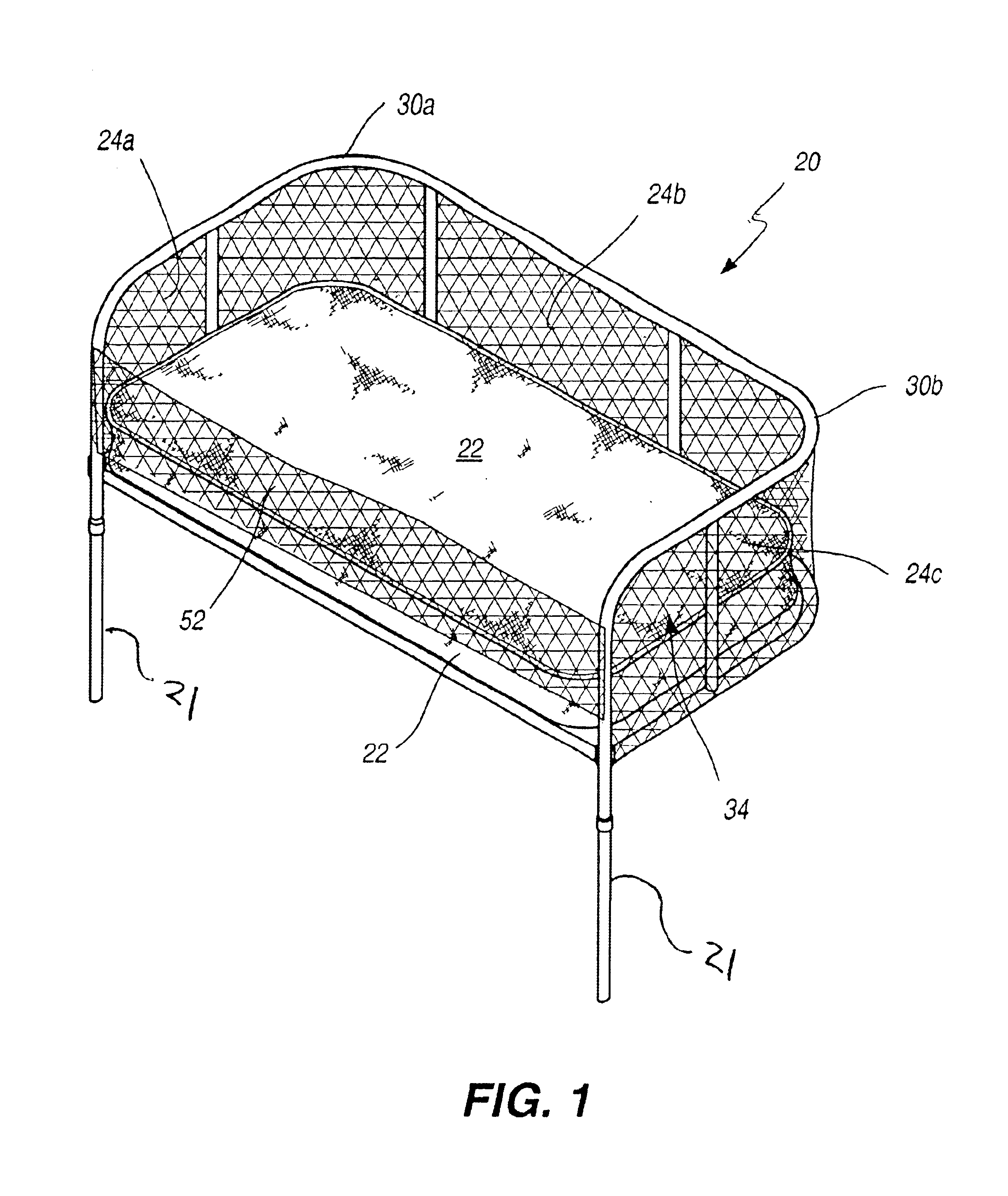Infant and pet co-sleeper apparatus
a cosleeper and infant technology, applied in the field of cosleeping apparatuses, can solve the problems of pet hair accumulation, unduly upset the child, pet hair accumulation, etc., and achieve the effect of facilitating cosleeping of an infan
- Summary
- Abstract
- Description
- Claims
- Application Information
AI Technical Summary
Benefits of technology
Problems solved by technology
Method used
Image
Examples
Embodiment Construction
With reference to FIGS. 1-3, a co-sleeping apparatus 20 is disclosed having a mattress 22, and three opposing vertically extending sidewalls or side panels 24a,b, and c. The co-sleeper apparatus 20 is operatively attached to an individual adult bed B by various means discussed below (e.g., a connecting appendage 40, strap or rope 26) which extends preferably between the parental mattress M and box spring BS-. The appendage 40 is preferably constructed of the same material as the structural supports of the co-sleeper 20 itself and serves the purpose of securing the co-sleeper 20 to the parental bed B by friction / weight provided between the mattress M and box spring BS.
In one embodiment, a rope or strap 26 is also connected on one end to the co-sleeping apparatus 20 and to the other end to a brace 28, which vertically extends so that it cannot fit between the parental mattress M and box spring BS, thus holding the rope or strap 26 under tension and facilitating the free standing natur...
PUM
 Login to View More
Login to View More Abstract
Description
Claims
Application Information
 Login to View More
Login to View More - R&D
- Intellectual Property
- Life Sciences
- Materials
- Tech Scout
- Unparalleled Data Quality
- Higher Quality Content
- 60% Fewer Hallucinations
Browse by: Latest US Patents, China's latest patents, Technical Efficacy Thesaurus, Application Domain, Technology Topic, Popular Technical Reports.
© 2025 PatSnap. All rights reserved.Legal|Privacy policy|Modern Slavery Act Transparency Statement|Sitemap|About US| Contact US: help@patsnap.com



